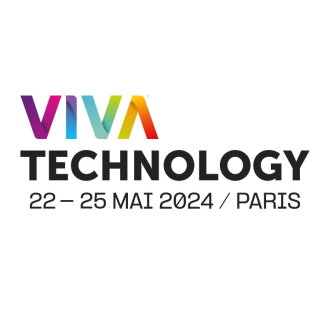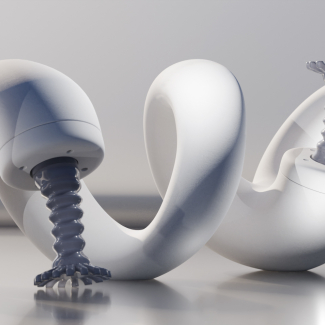
The chemist Jean-Marie Tarascon awarded the 2022 CNRS Gold Medal
|
|
Created in 1954, the CNRS Gold Medal is one the most prestigious French awards in science. This year it has recognized the chemist Jean-Marie Tarascon for his pioneering research in understanding and discovering new Li reactivity concepts, synthesising new electrode materials and electrolytes for batteries, and developing new battery chemistries. Tarascon has worked in CNRS-associated laboratories for over 25 years, and today serves as Professor at the Collège de France. The CNRS Gold Medal, along with a 50,000 euros endowment from the CNRS Foundation, will be awarded to him on 14 December 2022 during a ceremony in Paris.
Tarascon, who was born in 1953 in Marmande (Lot-et-Garonne), is a specialist in solid-state chemistry and electrochemistry. He has been a member of the French Academy of Sciences since 2004, and joined the Collège de France in 2014. Throughout his career, he has simultaneously conducted basic research and pursued the applications for that research, without ever making concessions with regard to scientific excellence. He is heading the Solid-State Chemistry and Energy Laboratory (CNRS/Collège de France/Sorbonne Université), as well as the Research Network on Electrochemical Energy Storage (RS2E)1 . Since his early career in the United States he has navigated between the idea and the prototype, at the intersection of academia and industry.
For Antoine Petit, the Chairman and CEO of the CNRS, “Jean-Marie Tarascon’s research is central to the scientific challenges and environmental concerns of the present and future, namely storing energy all while adhering to the principles of eco-conception, safety, and recycling. The CNRS would like to recognize his remarkable academic career by awarding him the 2022 Gold Medal. He is renown internationally as one of the leaders in basic research relating to materials for batteries, especially distinguishing himself through his pioneering research on Lithium-ion batteries.”
Upon earning his degree from the Bordeaux School of Chemistry and a doctorate in the physical chemistry of materials from l’Université de Bordeaux, Tarascon left for the United States in 1980 to complete a postdoctoral fellowship at Cornell University, and then joined Bell laboratories in New Jersey. In 1983 he was hired by Bellcore, its subsidiary focusing on telecommunications, and worked in the extremely competitive field of high-temperature superconductors. In 1989, the Loma Prieta earthquake in California brought him back to the field of batteries, as the autonomy of lead-based batteries proved insufficient during the emergency. He became the head of a team focusing on energy storage, and converted to electrochemistry. Exploring the avenue of lithium batteries, which was in its very beginnings, he and his team developed the first ultra-flat lithium batteries using a new system entirely housed in plastic, which was both flexible and safer. This highly-patented technology was licensed out to 20 battery manufacturers, and today is present in some electric vehicles.
Upon his return to France in 1995, Tarascon directed the Laboratory of Reactivity and Solid-State Chemistry in Amiens2 where as a Professor at l'Université de Picardie Jules Verne he worked on advanced technologies for post Li-ion batteries. In 2003 he was behind the creation of the ALISTORE-ERI European network of excellence, and in 2011 of the RS2E, a CNRS research network, the first such French network on energy bringing together industry and academia. It was under the leadership of Tarascon, who still directs RS2E, that it developed the Sodium-ion battery. While this battery provides slightly lower performance compared to Lithium-ion batteries, it is of great interest for the stationary storage of renewable energy, doing so at lower cost and using one of the most abundant elements (Na, sodium) on Earth.3 The development of these new batteries led to the 2017 creation of the start-up TIAMAT to bring them to market. Tarascon’s other noteworthy awards include the 2017 CNRS Innovation Medal, and the 2020 Balzan Prize.4
A prolific researcher and great teacher, Tarascon devotes part of his time to instruction at various levels, especially at the graduate level. He is involved in the dissemination of scientific culture, and has spoken at numerous primary schools to transmit his passion for research and to spark early interest in science among younger generations. He also takes part in various international workshops and decision-making committees on energy, along with drafting forward-looking articles on the same subject. Incessantly exploring new scientific horizons, he is now working on the development of smart and self-repairing batteries with integrated sensors to monitor the shortcomings of materials, in addition to ongoing wear and tear.

Find photos of the winner on the CNRS Images platform.
Discover his portrait in CNRS News.
Contact
Notes
- Created in 2011 by the CNRS with support from the French Ministry of Higher Education and Research, RS2E brings together 17 laboratories from the CNRS and its partners, in addition to technology transfer platforms led by the CEA, INERIS, and IFPEN as part of the Technology and Integration Research Centre.
- CNRS/Université de Picardie Jules Verne.
- Sodium is an element that is 5,000 times more abundant than lithium.
- In the field of environmental challenges: materials science for renewable energies.


